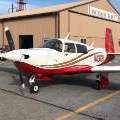Do you have an angle of attack indicator (poll)
Mooney AOA Indicator
92 members have voted
-
Members Online
- GeeBee
- raymondscott0321
- Skyland
- Paul Thomas
- ResumeNormalSpeed83
- Tom F
- eman1200
- triple8s
- Old Chub
- pkellercfii
- ElkoRandy20J
- Slick Nick
- mluvara
- stevesm20b
- Rotorhead
- chan65
- PeytonM
- Andy95W
- Nippernaper
- larryb
- Yugow
- Sabremech
- Daved
- Jakes Simmons
- PT20J
- N201MKTurbo
- richardbrochu27
- redbaron1982
- exM20K
- mooneyflyfast
- Rwsavory
- BrianWilkins
- Marc_B
- ta2too
- TCC
- 47U
- Woodslayer


Recommended Posts
Join the conversation
You can post now and register later. If you have an account, sign in now to post with your account.